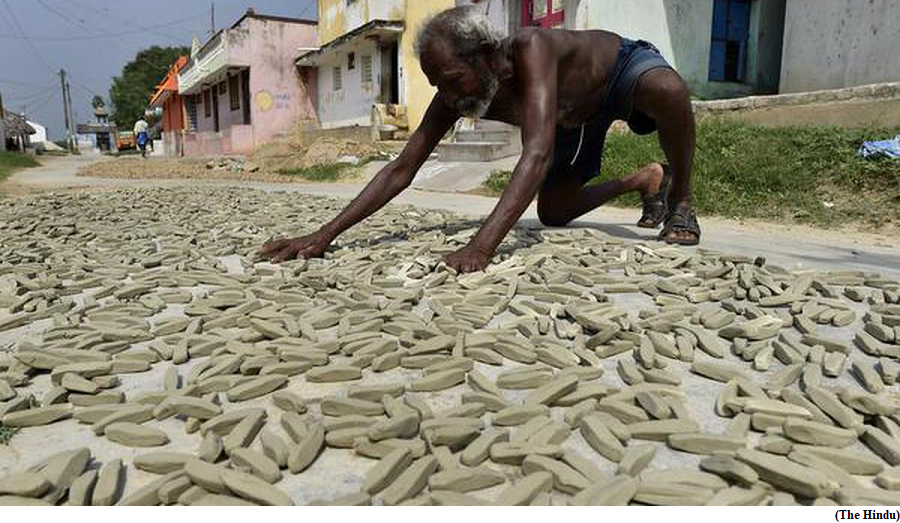Akira ransomware (GS Paper 3, Science and Technology)

Why in news?
- Recently, the Computer Emergency Response Team of India issued an alert for the ransomware dubbed “Akira.”
- The ransomware, found to target both Windows and Linux devices, steals and encrypts data, forcing victims to pay double ransom for decryption and recovery.
What is the Akira ransomware?
- The Akira ransomware is designed to encrypt data, create a ransomware note and delete Windows Shadow Volume copies on affected devices. The ransomware gets its name due to its ability to modify filenames of all encrypted files by appending them with the “.akira” extension.
- The ransomware is designed to close processes or shut down Windows services that may keep it from encrypting files on the affected system.
- It uses VPN services, especially when users have not enabled two-factor authentication, to trick users into downloading malicious files.
- Once the ransomware infects a device and steals/encrypts sensitive data, the group behind the attack extorts the victims into paying a ransom, threatening to release the data on their dark web blog if their demands are not met.
How does Akira ransomware work?
- The ransomware also terminates active Windows services using the Windows Restart Manager API, preventing any interference with the encryption process.
- It is designed to not encrypt Program Data, Recycle Bin, Boot, System Volume information, and other folders instrumental in system stability.
- It also avoids modifying Windows system files with extensions like .syn. .msl and .exe. Once sensitive data is stolen and encrypted, the ransomware leaves behind a note named akira_readme.txt which includes information about the attack and the link to Akira’s leak and negotiation site. Each victim is given a unique negotiation password to be entered into the threat actor’s Tor site.
- Unlike other ransomware operations, this negotiation site just includes a chat system that the victim can use to communicate with the ransomware gang.
How does ransomware infect devices?
- Ransomware is typically spread through spear phishing emails that contain malicious attachments in the form of archived content (zip/rar) files.
- Other methods used to infect devices include drive-by-download, a cyber-attack that unintentionally downloads malicious code onto a device, and specially crafted web links in emails, clicking on which downloads malicious code.
- The ransomware reportedly also spreads through insecure Remote Desktop connections.
- The threat actors also steal sensitive corporate data for leverage in their extortion attempts.
What can users do to protect against ransomware?
- CERT-In has advised users to follow basic internet hygiene and protection protocols to ensure their security against ransomware. These include maintaining up to date offline backups of critical data, to prevent data loss in the event of an attack.
- Additionally, users are advised to ensure all operating systems and networks are updated regularly, with virtual patching for legacy systems and networks.
- Companies must also establish Domain-based Message Authentication, Reporting, and Conformance, Domain Keys Identified Mail (DKIM), and Sender policy for organisational email validation, which prevents spam by detecting email spoofing. Strong password policies and multi-factor authentication (MFA) must be enforced.
- There should also be a strict external device usage policy in place and data-at-rest and data-in-transit encryption along with blocking attachment file types like .exe, .pif, or .url to avoid downloading malicious code.
Tamil Nadu’s Jaderi ‘namakatti’, chedibutta saree and Kanniyakumari Matti banana get GI tag
(GS Paper 3, Economy)
Why in news?
- Three famous products from Tamil Nadu; Jaderi namakatti, Kanniyakumari Matti banana, Chedibutta saree were given the GI tag by the Geographical Indications Registry recently.

Jaderi namakatti:
- Jaderi namakatti are clay sticks that are white in colour, usually available in finger-like shape with a smooth texture.
- Jaderi is a small village in Tiruvannamalai district. There are around 120 families in Cheyyar taluk whose primary occupation has been making namakatti for more than hundreds of years now.
- The namakatti is made up of the rich deposit of hydrous silicate minerals that form fine grain particles of clay. The clay is processed and shaped in a finger like structure.
- The production of namakatti depends on the climatic condition as it needs a lot of sunlight to dry.
Kanniyakumari Matti:
- Matti banana is mostly grow in the Agatheeswaram, Thovalai, Thiruvattar taluks of Kanniyakumari district.
- It is a traditional table banana cultivar of medicinal value and the fruit is highly fragrant, sweet with sub-acid flavour, firm texture and powdery nature.
- The Matti banana fruit‘s apex is 2.5 – 3 cm long and looks like mouth of a crocodile. It is also called as ‘Crocodile Finger Banana’.
Chedibutta saree:
- The Chedibutta saree is a handloom saree which depicts the Chedibutta design in art silk and cotton mix fabric.
- The name ‘Chedibutta’ is a combination of two Tamil words- ‘Chedi’ (plant) and ‘Butta’ (repeated motif or design).
- The Chedibutta saree has the iconic “plant and flower” motif woven on the border and pallu (edge of the saree). This flower plant design or the Chedibutta design is the intrinsic characteristic of this saree, hence the name.
- The saree is woven using art silk thread while the Chedibutta designs are made using brightly coloured cotton threads.
- The Sowrashtra community are the primary weavers of the saree. These sarees are woven by skilled weavers of the Veeravanallur town in the Tirunelveli.
Other products:
- Apart from this, seven other products from across India were also given GI tags. It includes
- Agra leather footwear
- Rajasthan’s Nathdwara Pichhwai Painting
- Kashmir’s Mushqbudji rice
- Bihar’s Marcha Rice
- Jammu Kashmir’s Rajouri Chikri Wood Craft
- Agsechi Vayingim (Agassaim Brinjal) of Goa
- Sat Shiro Bheno (Sat Shirancho Bhendo) also known as Okra, a vegetable crop of Goa.
About GI Tag:
- A geographical indication or GI is a sign used on products that have a specific geographical origin and possess qualities or a reputation that are due to that origin.
- Geographical Indications are part of the intellectual property rights that comes under the Paris Convention for the Protection of Industrial Property.
- In India, Geographical Indications registration is administered by the Geographical Indications of Goods (Registration and Protection) Act of 1999. Geographical indications are typically used for agricultural products, foodstuffs, wine and spirit drinks, handicrafts, and industrial products.



